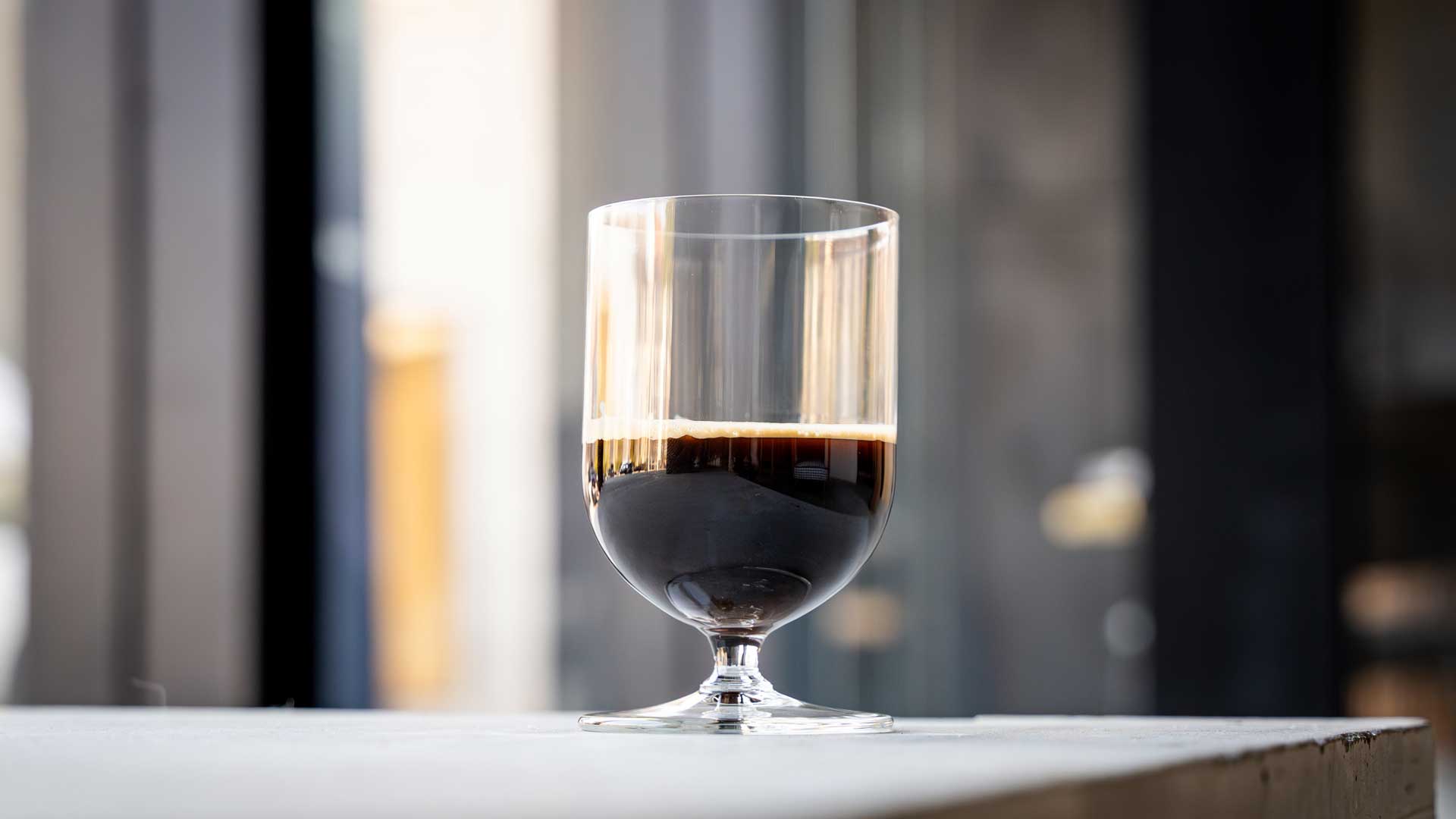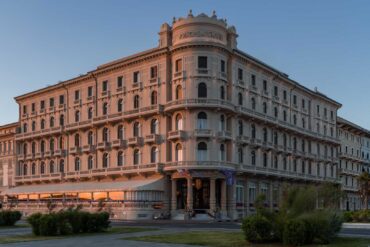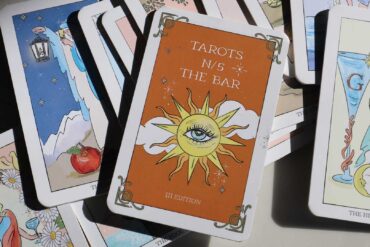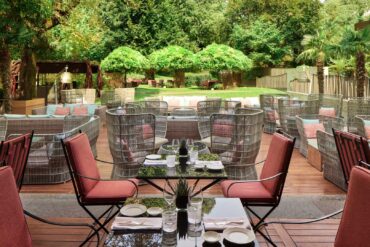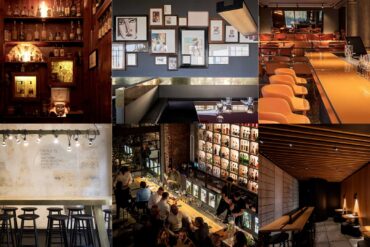Among the world’s most spectacular cocktails, Café Brûlot takes the top spot. In the past, its theatrical preparation was a tool for distraction—allowing skilled tricksters to rob distracted onlookers. Today, however, it serves a more honorable purpose: a grand display of skill that pays homage to its rich history. The recipe has remained largely unchanged over time, but this is not a drink for amateurs. Handling fire comes with real risks—burnt eyebrows, singed hands, or even a scorched bar top.
What Is Café Brûlot?
Café Brûlot is a dessert cocktail, traditionally served in restaurants as the final act of a meal. It’s a proud emblem of New Orleans, the city where it was born and where it continues to captivate guests with its dazzling presentation.
At its core, Café Brûlot is a blend of coffee, cognac, orange zest, cloves, and sugar. While it leans toward the sweet side, given its role as a post-dinner treat, it should never be cloying. Like any well-crafted cocktail, balance is key.
The Origins of Café Brûlot
Legend attributes the invention of Café Brûlot to Jean Lafitte, a notorious French pirate and privateer born around 1780 (his exact birthdate remains a mystery).
Historians debate whether Lafitte hailed from the French coastal town of Biarritz or if he was born in Santo Domingo, then a French colony. What is certain is that by 1805, he had established himself in New Orleans, running a warehouse where he and his brother Pierre trafficked smuggled goods.
Ever the cunning trickster, Lafitte devised a new way to boost his income: taking to the streets and putting on a flamboyant performance, manipulating live flames with mesmerizing skill. His act drew crowds, and while onlookers were entranced by the fiery spectacle, his accomplices would take the opportunity to relieve them of their valuables.
From Pirates to Fine Dining to the Cocktail Renaissance
Fast forward to the late 1880s. Jean Lafitte was long gone, but Café Brûlot had secured its place in New Orleans’ collective imagination. Jules Alciatore, the son of Antoine Alciatore, decided to add it to the menu of Antoine’s, the French Quarter restaurant his father had founded—a restaurant that still operates today.
Before long, other restaurants followed suit, each putting its own spin on the recipe and preparation techniques. For years, Café Brûlot remained a well-kept secret of New Orleans, rarely found beyond the city’s borders.
Then came 1996, when Dale DeGroff, one of the most influential figures in modern mixology, introduced Café Brûlot to the world during the cocktail renaissance, bringing it international recognition. In doing so, he also reignited an old problem: the drink requires a very specific piece of equipment that was already becoming scarce.
Not a Drink for Everyone
To properly prepare Café Brûlot, you need a specialized piece of barware: a silver-plated copper punch bowl mounted on a brass base, designed to hold and ignite the flaming alcohol. You also need a ladle—easy enough to find—but the bowl itself is another story. By the late 1990s, even in New Orleans, only a few remained, and production had stopped 10 to 15 years earlier due to declining demand.
Recognizing a business opportunity, DeGroff commissioned a new Brûlot bowl to be manufactured to his specifications. The last time we checked, one of these bowls cost around €825—not exactly pocket change. While some may be tempted to improvise, it’s crucial to remember that Café Brûlot involves live fire.
Even Stanley Clisby Arthur, in his 1937 book Famous New Orleans Cocktails and How to Mix ‘Em, warned against cutting corners: “Do not use your wife’s silver fruit bowl,” he advised, “even though it may resemble a Brûlot bowl in shape and size.” He then shared the cautionary tale of a man who ignored this advice, destroying “the wedding gift from his wealthy, elderly Aunt Hattie,” and creating an embarrassing scene in the process.
The Classic Café Brûlot Recipe
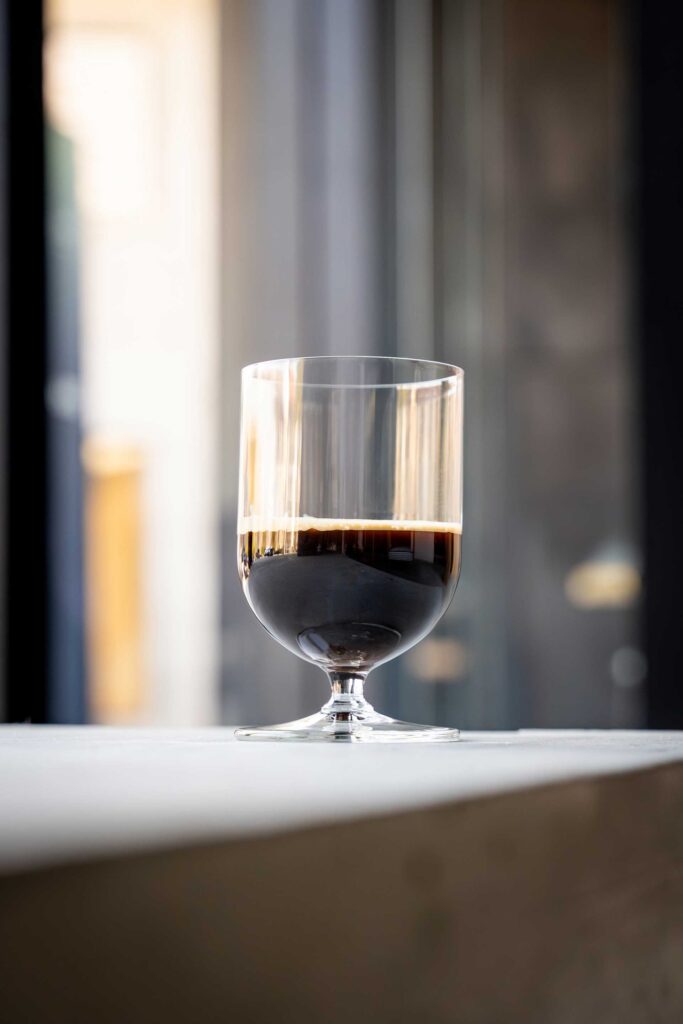
Each restaurant in New Orleans guards its own unique variation of Café Brûlot. The version below is the one documented by Stanley Clisby Arthur in Famous New Orleans Cocktails and How to Mix ‘Em. The recipe serves about twenty people. Arthur insisted that only strong, American-style coffee from New Orleans should be used for authenticity.
Ingredients
- 240 ml cognac
- 45 sugar cubes
- 50 cloves
- 3 cinnamon sticks (broken into pieces)
- ½ orange peel, cut into thin strips
- 1 small piece of lemon peel, cut into thin strips
- 1 liter of freshly brewed coffee
Method
Preparation begins well in advance. Place all the ingredients—except for the coffee—into the Brûlot bowl and let them sit for at least six hours, allowing the cognac to absorb the flavors.
When it’s time to serve, brew a pot of hot coffee. Meanwhile, light the flame under the Brûlot bowl and dim all the room’s lights to emphasize the flickering fire (as Arthur himself recommended). Once the cognac begins to warm, ignite it by dipping the ladle into the liquid and carefully bringing it close to the flame.
Stir gently, then raise the ladle high, pouring the flaming liquid back into the bowl in a continuous stream to create a mesmerizing ribbon of fire. Before the flames burn off too much alcohol, slowly and carefully pour in the hot coffee, allowing the fire to subside. Serve in cups or small mugs.
Garnish
None.
Dale DeGroff’s Version
Since we’ve mentioned Dale DeGroff, it’s worth noting that his Café Brûlot differs significantly from Arthur’s.
First, he adds equal parts rum to the cognac, along with half as much cherry brandy. Instead of sugar cubes, he opts for simple syrup, which is only added at the very end. Additionally, DeGroff uses a whole orange peel, cutting it in one continuous spiral without breaking it. He then studded the entire length with cloves.
For the performance, he holds the orange spiral in place with a long-handled fork, suspending it over the Brûlot bowl. One end dangles in the mixture, while the other remains elevated. In his other hand, he holds the ladle.
Lifting a scoop of flaming cognac, he pours it slowly over the orange spiral, allowing the liquid to cascade down. As the clove-studded peel heats up, the spices begin to crackle, releasing their aromatic oils. He repeats this process several times before extinguishing the flames with hot coffee. Only then does he add the warmed simple syrup before serving.
Photo credits Julie Couder for Coqtail, location Moebius Milano, all rights reserved


